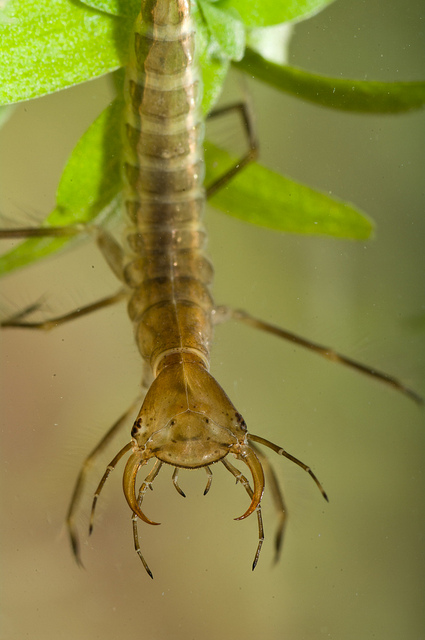Underwater predator!
One of my favourite spots on the reserve is the tree nursery, especially the small pond which is home to many a frog or pond snail. However while I was having a look under the lilly pad covered surface I spotted something else!

While this may look like something you might expect to see in a science fiction film bursting from an egg or chasing astronauts round a space ship, it is actually a Great diving beetle larvae (Dytiscus marginalis) and more at home in Britain’s ponds than outer space.
The larvae can grow up to 6cm in length and are fierce carnivores eating anything they can catch including tadpoles and any other insects. They are also cannibalistic and will eat other smaller Great Diving Beetle larvae. Large larvae in the final stage before pupation are of sufficient size to even catch and eat small fish! These aquatic hunters are armed with large, pointed, sickle-shaped jaws which are sunk into the prey like hypodermic needles. Digestive enzymes are then pumped into the body of the prey and the resulting ‘soup’ is sucked back up. Truly something to be scared of if you are a small freshwater dweller!
The larvae often move about with their tails extended vertically upwards making them look like aquatic scorpians and will frequently push the tail up through the water surface to take in atmospheric oxygen through the air-hole on the end of the tail. Hopefully we will also see some adults hunting in the pond later on.
Bye for now!
Alex Kekewich – Falls of Clyde Seasonal Ranger
Help protect Scotland’s wildlife
Our work to save Scotland’s wildlife is made possible thanks to the generosity of our members and supporters.
Join today from just £3 a month to help protect the species you love.
Preface
One of my favourite spots on the reserve is the tree nursery, especially the small pond which is home to many a frog or pond snail. However while I was …
